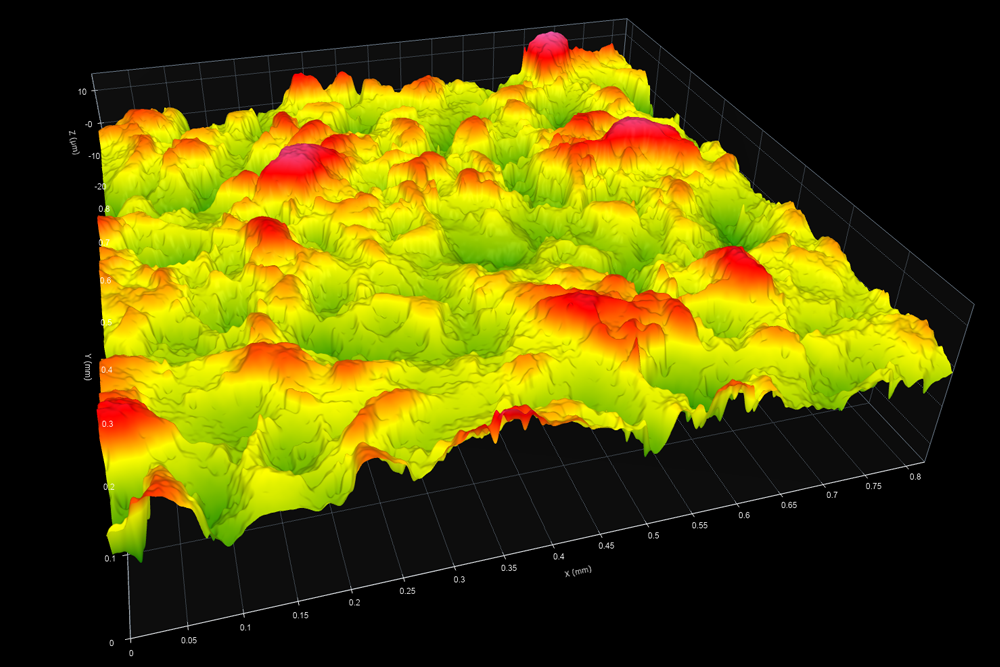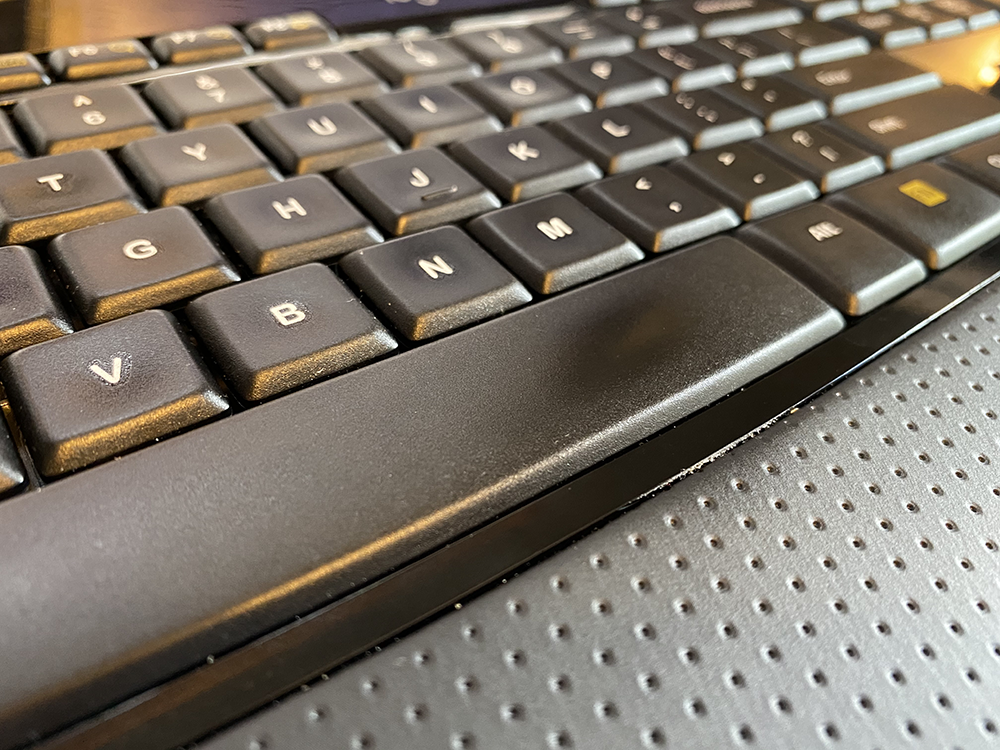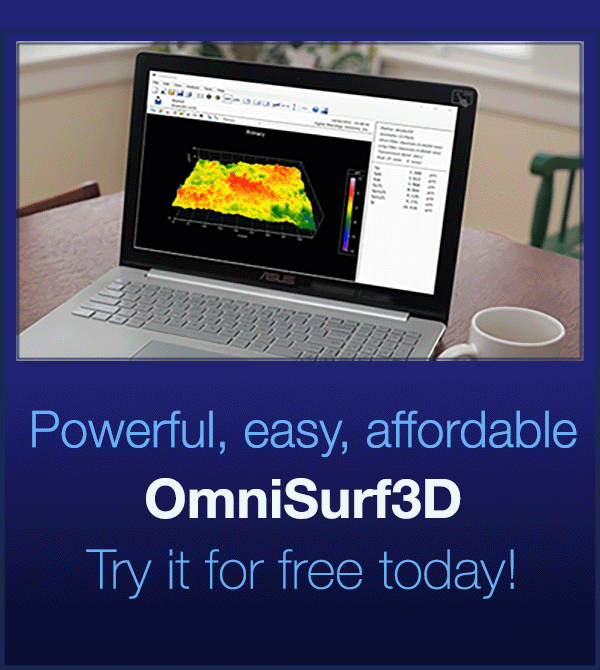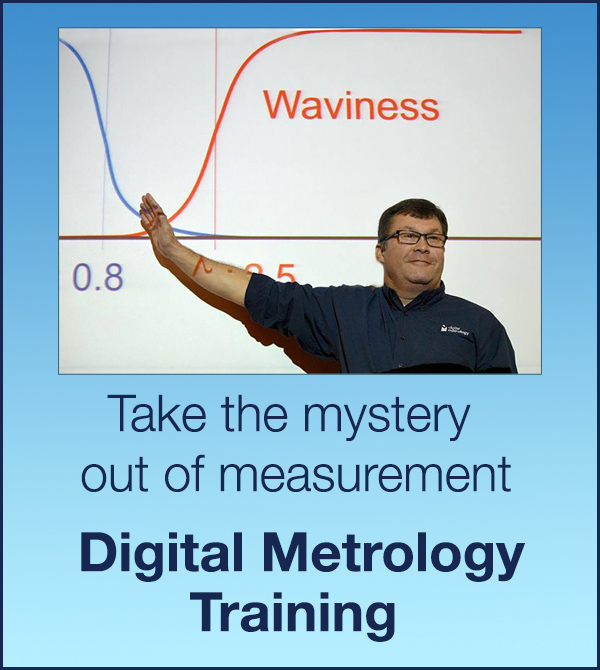
This pair of datasets (Unworn and Worn) provides an excellent, close-to-home example of micro-wear. The measurements are from the worn and unworn areas of the space bar on a computer keyboard. The wear has not completely removed the texture, but it is quite noticeable in this image. The differences will appear dramatically in amplitude parameters such Sa or Sz.

The unworn data has some short wavelength noise that can skew amplitude parameters such as Sa and Sz. A 2nd Order Gaussian short filter (Analysis Settings > Filtering > Short Wavelength Limitation >2nd Order Gaussian + 0.008 mm cutoff) will reduce the noise.
An important note: when comparing the data, be sure that you use the same vertical scales for both datasets. When Auto-Scaling is applied, the software will use the full color range to display the data, which can make both datasets look rough! To set the scale, right-click on the data plot, choose Scaling, and enter the same limits for both datasets.
The worn and unworn datasets provide an interesting opportunity to explore “micro wear” as described in the paper “Advanced Wear Analysis with OmniSurf and OmniSurf3D.”
Measured via Zygo ZeGage Plus (10x)
Data source: Digital Metrology Solutions (www.digitalmetrology.com)
Please log in below to download the datasets. If you’re new to the page, please take a moment to register here.
I forgot my password
How to cite
If you use this dataset, please reference it as follows:
Digital Metrology Solutions. “Surface Library.” Digitalmetrology, digitalmetrology.com/dataset/space-bar-unworn. Accessed Jun 03, 2025.


